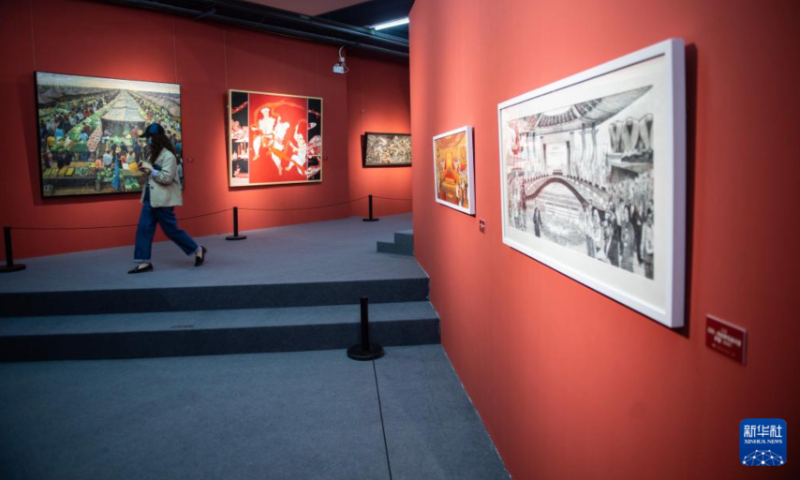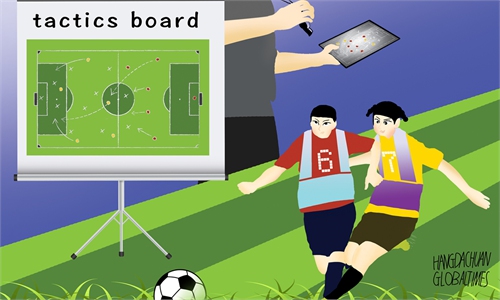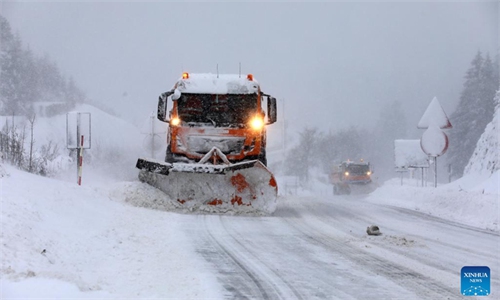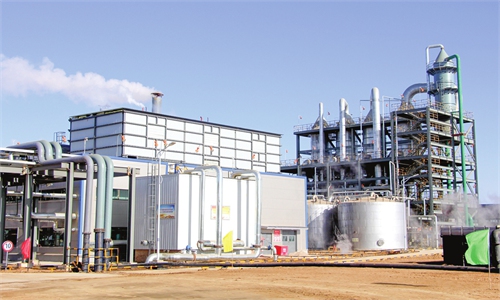ARTS / ART
Exhibition in Beijing examines role of contemporary Chinese landscape paintings

An art exhibition in Beijing Photo: Xinhua
An art exhibition that shows how China's traditional landscape paintings have integrated and progressed contemporary aesthetics kicked off at the He Art Gallery in Beijing on Monday.
The Jiang Shan Duo Jiao (Lit: The magnificence of the motherland) exhibition displays works from 115 Chinese artists across styles such as oil paintings and Chinese ink paintings.
These works all reveal the artists' interpretion of the theme "landscape."
Chinese landscape painting originated in the Wei (220-265) and Jin (265-420) dynasties and reached its peak during the Tang Dynasty (618-907). Ye Nong, the executive director of the China Landscape Painting Academy, said at the opening ceremony.
He further expanded that over Chinese painting's more than 1,800 years of development, ancient aesthetics and the use of brush and ink became representative styles that were the main force behind the art of today's contemporary landscape artists.
"It is an important part of the traditional culture of the Chinese nation. The prosperity and development of Chinese painting was our common goal," he added.
Compared with traditional landscape paintings' inclination toward natural scenery, artworks at the show feature some new subjects. Some of them depict the rural life of Chinese people against the backdrop of the country's poverty alleviation efforts, while others show Chinese cultural landscapes that are closely linked to China's ethnic and cultural diversity.
Yu Heyong, a member of the Shandong Artists Association, said that art is rooted in life. Whether it is traditional Chinese painting or oil painting, the paintings contain the cultural accomplishments and artistic skill of the author.
Xu Jingjing, an art researcher, told the Global Times that artists are social observers. The social scenery changes, and so do the themes artists pursue.
"Such timely expressions rejuvenate traditional Chinese art and makes it contemporary," Xu noted.
Song Shaobo, the director of the gallery, said that in China, painting and calligraphy are treasures of traditional culture and not only inherit Chinese civilization, but are also mediums for the exchange of ideas between different cultures.
The event is scheduled to end on April 5.



